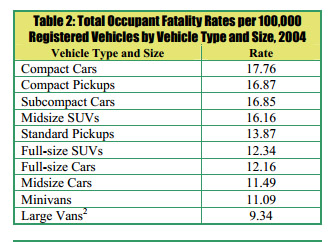It is a universally known "fact" that the bigger the vehicle you drive, the safer you are.
Even those who buy small vehicles know this, they just feel that the increase in risk is small, and the benefits to parking, mileage, and cost are worth it.
Like many other universally known things, it just happens to be wrong.
This is extremely easy to prove: just look at the actual crash statistics, compiled by vehicle weight:

